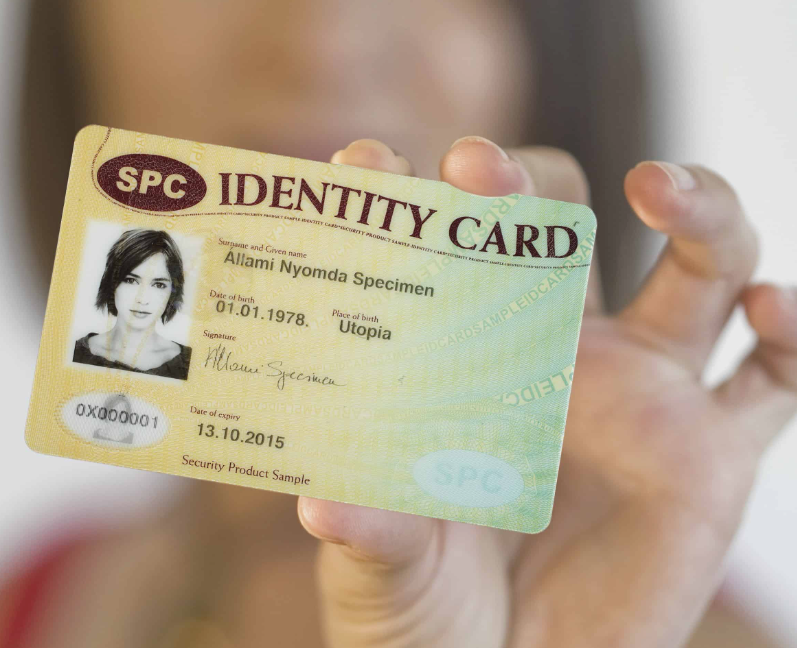This article aims to provide comprehensive information on how to generate a sample Canadian Social Insurance Number (SIN). The SIN is a crucial nine-digit identification number issued to individuals in Canada for various identification purposes. It plays a significant role in areas such as employment, taxation, and accessing government benefits.
The structure of a SIN is essential to understand its significance. Each digit in the SIN has its own meaning and contributes to its uniqueness. The first digit of a SIN represents the type of individual or organization associated with the number. The remaining eight digits are equally important as they contribute to the identification and uniqueness of the SIN.
Generating a sample SIN can be done for testing or demonstration purposes while ensuring privacy and compliance with legal regulations. It is important to follow step-by-step instructions to generate a sample SIN accurately. By doing so, individuals can gain a better understanding of the process and the significance of the SIN in Canada.
Why is a SIN important?
Understanding the importance of a SIN (Social Insurance Number) is crucial for individuals residing in Canada. This unique nine-digit number plays a significant role in various aspects of their lives, including employment, taxation, and accessing government benefits.
When it comes to employment, a SIN is a mandatory requirement for both employers and employees. Employers need to obtain their employees’ SINs for payroll and taxation purposes, while employees need to provide their SINs to ensure accurate reporting of their income and deductions.
Moreover, a SIN is essential for taxation purposes. It allows the Canadian government to track individuals’ income and ensure they are fulfilling their tax obligations. By linking income information to SINs, the government can accurately calculate and collect taxes from individuals.
Additionally, a SIN is necessary for accessing various government benefits and services. Whether it’s applying for healthcare, social assistance, or other government programs, a SIN serves as a unique identifier to determine eligibility and provide individuals with the benefits they are entitled to.
In summary, a SIN is of utmost importance in Canada as it facilitates employment processes, ensures accurate taxation reporting, and enables individuals to access government benefits and services. It is crucial for individuals to understand the significance of their SIN and keep it secure to protect their identity and ensure compliance with legal requirements.
Structure of a SIN

The structure of a Canada SIN Number plays a crucial role in identifying individuals and organizations within Canada. A SIN is a unique nine-digit number that holds significant information about the holder. Understanding the structure of a SIN is essential for various purposes, such as employment, taxation, and accessing government benefits.
A SIN consists of three parts: the first digit, the next seven digits, and the final verification digit. Each part carries specific significance in the identification process. The first digit of a SIN represents the type of individual or organization associated with the number. For example, a SIN starting with the digit “9” indicates that it belongs to a temporary resident or a non-resident of Canada.
The remaining seven digits in a SIN are randomly generated and contribute to its uniqueness. These digits hold no specific meaning but are crucial for identification purposes. The final verification digit, also known as the ninth digit, is calculated using a specific formula to ensure the validity of the SIN. This digit acts as a checksum and helps detect any errors or inconsistencies in the number.
Generating a sample SIN follows a specific algorithm to ensure privacy and compliance with legal regulations. It is important to note that generating a sample SIN for testing or demonstration purposes should not be used for any illegal activities or identity theft. The privacy and security of individuals’ information should always be respected and protected.
To generate a sample SIN, one must follow the prescribed algorithm and use random number generation techniques. This ensures that the generated number is unique and complies with the rules and regulations set by the Canadian government. It is important to use such tools responsibly and ethically, understanding the implications and consequences of misusing or mishandling personal identification information.
First digit
The first digit of a Canadian Social Insurance Number (SIN) holds significant meaning and provides insights into the type of individual or organization associated with the number. This digit is known as the “prefix” and plays a crucial role in identifying the purpose of the SIN.
The first digit of a SIN can range from 1 to 9, excluding the number 0. Each digit represents a specific category or group of individuals, enabling efficient identification and classification. Here is a breakdown of the meaning behind each first digit:
| First Digit | Category |
|---|---|
| 1 | Canadian-born individuals |
| 2 | Permanent residents |
| 3 | Temporary residents, such as international students or foreign workers |
| 4 | Individuals who were granted refugee status |
| 5 | Individuals who have obtained Canadian citizenship |
| 6 | Temporary residents who are authorized to work in Canada |
| 7 | Individuals who have a work permit under the Live-in Caregiver Program |
| 8 | Individuals who have a work permit under the Canadian Experience Class |
| 9 | Individuals who have a work permit under the Seasonal Agricultural Worker Program |
By analyzing the first digit of a SIN, organizations and government agencies can quickly determine the status and eligibility of individuals. This information is crucial for various purposes, including employment verification, taxation, and the provision of government benefits.
It is important to note that the first digit of a SIN alone does not reveal the complete identification number. The remaining eight digits, which are unique to each individual, further contribute to the identification and uniqueness of the SIN.
Remaining digits

The remaining eight digits in a Canadian Social Insurance Number (SIN) play a crucial role in its uniqueness and identification purposes. Each digit carries specific significance and contributes to the overall structure of the SIN. Let’s break down the significance of these digits:
- Second to sixth digits: These digits represent the individual’s date of birth. The year, month, and day are encoded in a specific format to ensure consistency and accuracy.
- Seventh digit: This digit is known as the “sex digit” and indicates the individual’s gender. Odd numbers are assigned to males, while even numbers are assigned to females.
- Eighth and ninth digits: These digits are collectively known as the “check digits” and are used for verification purposes. They are calculated based on the previous seven digits using a specific algorithm.
The combination of these remaining digits creates a unique identifier for each individual. This uniqueness is essential for accurate identification and differentiation among the millions of individuals in Canada. The SIN serves as a key tool in various aspects, including employment, taxation, and accessing government benefits.
It is important to note that the SIN should be kept confidential and only shared with authorized individuals or organizations. Protecting the privacy and security of this identification number is crucial to prevent identity theft and fraud.
Generating a sample SIN
Generating a sample SIN is a straightforward process that allows individuals to test or demonstrate the structure of a Canadian Social Insurance Number. It is important to ensure privacy and compliance with legal regulations while generating a sample SIN. Follow the step-by-step instructions below to generate a sample SIN:
- Start by understanding the structure of a Canadian SIN. It consists of nine digits separated by hyphens in the format XXX-XXX-XXX.
- The first digit of a SIN represents the type of individual or organization associated with the number. It can range from 1 to 9.
- The remaining eight digits contribute to the uniqueness and identification purposes of a SIN.
- To generate a sample SIN, you can employ online SIN generator tools or software designed explicitly for this purpose. These tools ensure the generated number adheres to the correct format and rules set by the Canadian government.
- On the website, look for the option to generate a Canadian SIN.
- Enter the required information, such as your name and date of birth, to generate a sample SIN.
- The tool will generate a unique nine-digit number that resembles a real Canadian SIN.
- Remember that the sample SIN is for testing or demonstration purposes only and should not be used for any illegal activities.
- Ensure that you respect privacy regulations and do not share the generated sample SIN with unauthorized individuals.
By following these steps, you can easily generate a sample Canadian SIN and gain a better understanding of its structure and significance. Remember to use the generated sample SIN responsibly and in compliance with legal requirements.





